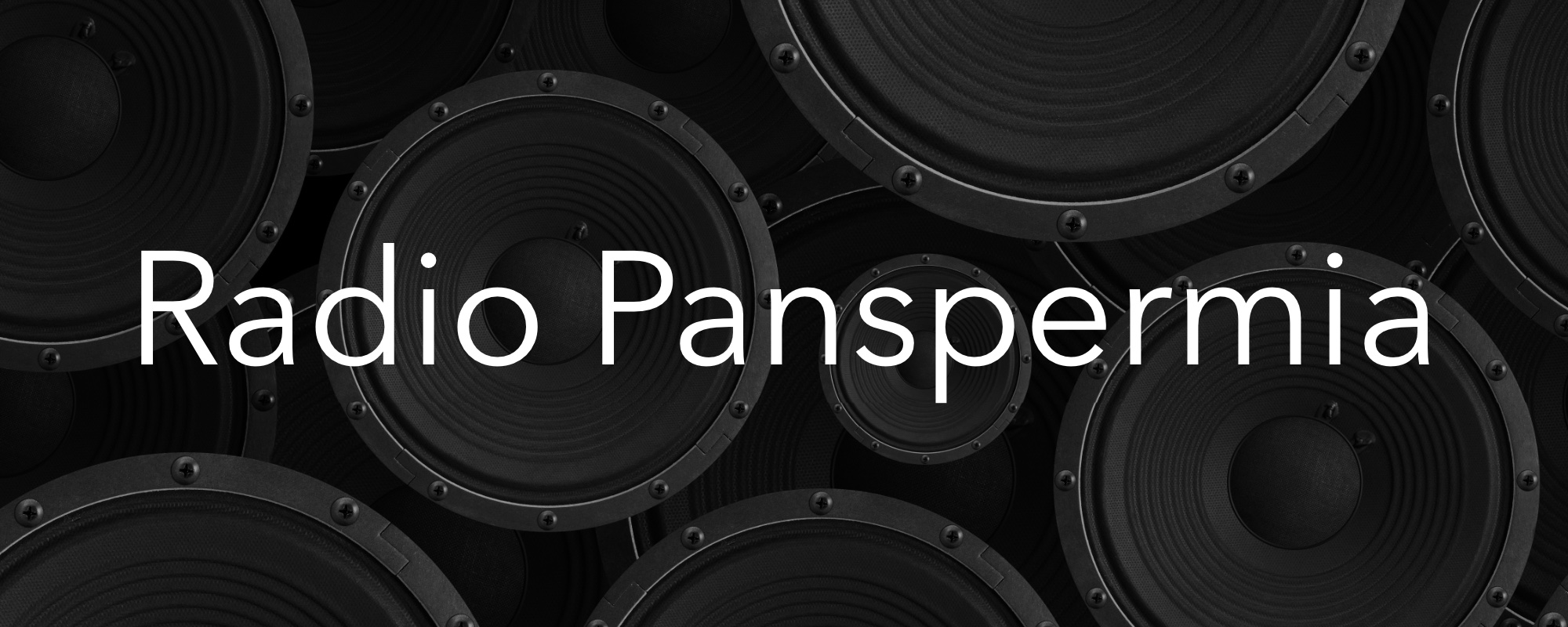
MULTICHANNEL SOUND OVER THE INTERNET
RADIO PANSPERMIA SITE WITH LINKS TO THE WORKS: radiopanspermia.space
The Panspermia Hypothesis proposes that life on earth may have come from bacteria distributed through interstellar space. 15 years ago, I found it a fitting metaphor for a performance/installation project I conceived of. I would beam the sounds of my Endangered Guitar performance through a radio transmitter to various radios in the space, all set to the same frequency.It would have been the same sound; however, large radios would provide the lower end of the spectrum, smaller radios the higher parts. The audience would carry around hand-held radios to project sounds in different directions, making it a moving loudspeaker orchestra.
AUDIO ORCHESTRATOR
Using BBC R&D’s Audio Orchestrator (see links below), one can make this today into a multichannel performance over the internet. Each voice is different and plays through its own device: desktop or laptop computer, smartphone, or tablet.
One can experience the works on this site at home as a spatialized environment. So far, I have re-composed eight pieces for the Audio Orchestrator, using sources and excerpts of multichannel performances and projects from the last 15 years. The works use between 4 and 16 voices, but I re-edited the works in ways that one can get some idea when just two devices are connected. Not many people have 16 computers at their disposal, however, 16 people could easily attend a public installation. How does it work?
LOUDSPEAKER ORCHESTRA VS. SOUND OBJECTS
For many of the 4-channel works, the speaker’s position is indicated at the bottom (Front Left, Front Right, Rear Right, Rear Left), so you could place the devices accordingly. That said, most works follow the loudspeaker orchestra idea, in that sounds reside in just one device and are not panning between speakers. In that case, it does not matter where your device is situated.
However, I had good results with the sound object concept, too. If sounds move between speakers, one would need to hear _all_ channels at precisely the right position. I focused less on immersive environments (such as ambisonics) but single sound objects moving between individual speakers, and this worked well with the Audio Orchestrator.
A detailed description can be found on BBC’s Case Study website: Audio Orchestrator for Installation and Performance. Link here, mirror on this site here.
BBC
Link to the Audio Orchestrator is here, the tool was developed by the BBC Research & Development Audio Team. Check out the other tools on Connected Studio MakerBox. There’s a list of pilot productions on the BBC Taster and on GitHub. For more discussions about the Audio Orchestrator see their forums.